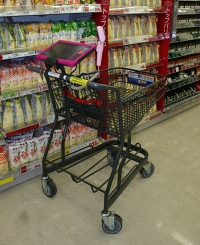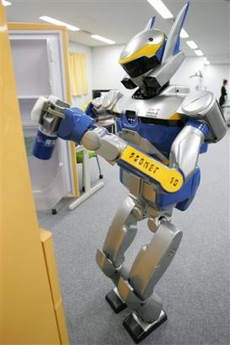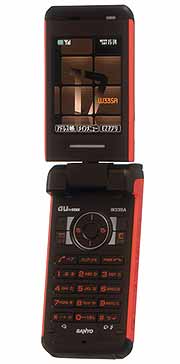 On January 25, Fujitsu, AEON and Dai Nippon Printing announced plans to conduct a trial run of a retail support system that uses IC tags and data display terminals. In this retail service system of the future, customers will be able access a variety of product information by electronically reading tags placed on supermarket shelves. The trial run will be conducted at Jusco supermarket (Yachiyo-midorigaoka branch) for a five-week period beginning February 6, in Yachiyo City, Chiba.
On January 25, Fujitsu, AEON and Dai Nippon Printing announced plans to conduct a trial run of a retail support system that uses IC tags and data display terminals. In this retail service system of the future, customers will be able access a variety of product information by electronically reading tags placed on supermarket shelves. The trial run will be conducted at Jusco supermarket (Yachiyo-midorigaoka branch) for a five-week period beginning February 6, in Yachiyo City, Chiba.
The trial run is part of the Ministry of Economy, Trade and Industry?s 2005 "Japan Future Store Project," featuring a series of trial demonstrations of electronic tag applications aimed at realizing retail services of the future. The store will be outfitted with 25 "shopping navi-carts" equipped with tag readers and data display terminals, and IC tags will be attached to approximately 500 selected food items.
Shoppers will be able to view a variety of information, ranging from product descriptions and instructions to video commercials, by holding the tag reader near the tags. The equipment will also assist shoppers in locating specific products within the store. When carts are moved to specified locations, promotional information and other data related to the relevant product category will be delivered to the data terminals.
Customers using the system will be asked to complete surveys after they finish shopping. Technical issues and other side effects, such as whether or not customers purchased more when using the carts, will also be studied.
Each company will play a specific role in the trial run. Aeon will run the experiment in the store, review the content, and link the trial system with the existing system. Fujitsu will handle project management, provide administrative support, configure the system, and provide the navi-cart data terminals and software. Dai-Nippon Printing will create content and provide programming support.
[Source: Nikkei BP]

 On January 23, the
On January 23, the 

 A consortium of Kyushu-area businesses, including robot developer TMSUK (Kitakyushu), has developed a compact robot hand. In Fukuoka on January 9, a robot equipped with the hands demonstrated its dexterity by scooping candy into bags.
A consortium of Kyushu-area businesses, including robot developer TMSUK (Kitakyushu), has developed a compact robot hand. In Fukuoka on January 9, a robot equipped with the hands demonstrated its dexterity by scooping candy into bags.
 NTT Docomo's new FOMA N701i ECO, the world's first cellphone to incorporate parts made from plant-based plastic, is scheduled for release this spring.
NTT Docomo's new FOMA N701i ECO, the world's first cellphone to incorporate parts made from plant-based plastic, is scheduled for release this spring.